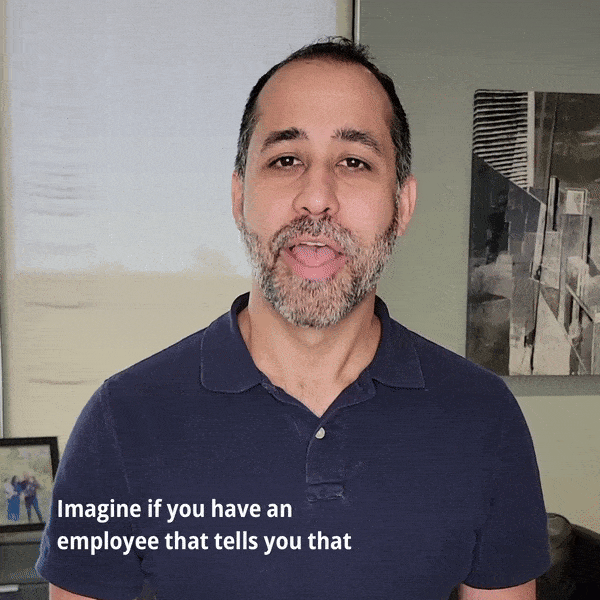It’s a fact that small to middle-sized businesses may face significant costs and disruption when a pregnant employee requests light duty work or asks to take pregnancy leave, even if that leave is unpaid. It is especially true if she has an important role in running things.
Is it legal for an employer to refuse to hire or fail to promote an employee who, in the future, may ask for light duty or leave? Can an employer discriminate in terms of work assignments or benefits offered either in anticipation of pregnancy or after the fact? Can an employer simply deny the requests, terminate the employee and replace her with someone less likely to ask for these things — like a man, for instance?
Federal law provides extensive protection to job applicants and employees who either are or may become pregnant. Some states, like California, provide even more comprehensive safeguards. These laws attempt to balance employee and employer interests in ways that not all employers may appreciate, however. Most employers can avoid claims of discrimination by communicating carefully with employees about accommodation and leave policies.
Sex and Pregnancy Discrimination
Refusing to hire or promote an otherwise qualified applicant or employee because she is female is garden variety sex discrimination, clearly prohibited on the face of Title VII of the Civil Rights Act. In California, these actions would also be prohibited under the California Fair Employment and Housing Act. Title VII applies to employers of 15 or more employees and CFEH to any California employer who employs 50 or more people throughout the country.
Pregnancy, itself, was not originally covered under Title VII, but was added in 1978 by the Pregnancy Discrimination Act. Under Title VII as amended, an employer may not:
- Fire, or refuse to hire or promote, a woman because she’s pregnant or may become pregnant,
- Take other adverse employment action against a woman because she’s pregnant, may become pregnant, or gives birth. (This includes cutting her hours, withholding projects or demoting her to a lower level position),
- Treat pregnancy-related conditions differently from other disabling conditions,
- Deny pregnant women fringe benefits given to other employees,
- Require an employee to take maternity leave,
- Discriminate against an employee because she is pregnant and unmarried,
- Not allow a pregnancy-related absence for the same amount of time as any other disability or sick leave or
- Not allow reasonable accommodations offered to other employees with a temporary disability, including modified tasks or alternative assignments,
The modern cases tend to focus on the requests for reasonable accommodations at work and pregnancy leave.
Accommodations at Work
The Supreme Court’s recent decision in Young v. UPS may have muddied the waters a bit on the PDA’s requirement that accommodations be offered on a nondiscriminatory basis.
Peggy Young was a driver for UPS when she became pregnant in 2006. Her doctors told her that she should not lift packages weighing more than twenty pounds for the first twenty weeks of her pregnancy; and not more than ten pounds thereafter. Her job description required that she be able to lift seventy pounds, and so she requested an accommodation. When it was denied, she was put on an unpaid leave of absence and lost her health insurance.
Her lawsuit alleged that workers with similar lifting restrictions were routinely assigned to light-duty jobs. The only condition for which accommodations were denied was pregnancy. Young argued that employers are required to accommodate pregnant women when they provide an accommodation to any other non-pregnant employee who is similar in ability to work.
Although the Court ruled in her favor, the decision suggests that employers may offer fewer accommodations to pregnant employees than are offered to other groups of employees, if they have a good enough reason. As to what those reasons might be, the court offers little guidance, except to say that cost or inconvenience would not be sufficient.
Since cost and inconvenience are the principal issues that employers face with accommodation requests, the takeaway may simply be that accommodations that are routinely offered to other employees should also be offered to pregnant employees when requested.
Pregnancy and Disability Accommodations
The practical significance of the Young case may be even more limited than it appears. In 2006, when Young’s claim arose, few complications of pregnancy generally rose to the level of disability under the Americans with Disabilities Act. The ADA requires employers to offer reasonable accommodations to otherwise qualified applicants and employees if those accommodations would enable the employee to perform the essential functions of the job without causing the employer undue hardship. Since then, the language of the statute has been amended in ways to make it more likely that pregnancy will qualify as a disability. The ADA, like Title VII, applies to employers of 15 or more employees.
Employers should then evaluate pregnant workers’ requests for light-duty work in two contexts. Because of Young, they should look at whether alternative work assignments are offered to other workers and because of changes in the ADA, they should evaluate whether the requested change will cause them undue hardship. Being able to perform the essential functions of the job has always been part of the equation.
What is undue hardship? On a case-by-case basis, it means “action requiring significant difficulty or expense” when considered in light of the nature and cost of the accommodation in relation to the size, resources, nature, and structure of the employer’s operation. If a requested accommodation would be an undue hardship, the employer must try to identify another accommodation that will not pose such a hardship.
California’s Fair Employment and Housing Act requires an employer to grant an employee’s request for reasonable accommodation for a condition related to pregnancy, childbirth or a related medical condition, upon the advice of her physician. The accommodation may include a transfer to a less strenuous or hazardous position if the transfer can be reasonably accommodated. Employers must provide reasonable advance notice of these rights to employees.
Pregnancy Leave
Under the PDA, if an employer offers paid short-term leave to employees who are sick or who hare temporarily disabled, pregnant employees must be offered pregnancy leave on the same terms.
Pregnancy leave is more likely to be covered under the statutory provisions of the Family Medical Leave Act, which covers employers of 50 or more employees. FMLA requires employers to offer eligible employees up to 12 weeks of unpaid leave for the birth and care of a newborn child or for adoption or foster care placement. An eligible employee is one who has been employed for at least 12 months, worked at least 1,250 hours over the past 12 months, and who works at a location where the company employs 50 or more employees within 75 miles. During the period of leave, benefits, like health insurance must be continued on the same basis as they were offered before.
The law also requires that employers reinstate employees who have returned from FMLA leave to the same or a comparable job. “Key employees,” salaried employees who are among the highest-paid 10 percent of all employees and whose reinstatement would cause “substantial and grievous economic injury” to the organization’s operations, need not be reinstated, however.
California has implemented a Paid Family Leave (PFL) insurance program, which when taken in conjunction with FMLA and California Family Rights Act (CFRA) leave, provides up to six weeks paid leave. The program is administered by the State Disability Insurance Program.
CFRA, by itself, closely mirrors the provisions of the federal FMLA with respect to covered employers, eligible employees, the maximum period of leave and reinstatement rights.
How Should Employers Handle Pregnancy Issues?
The first step, of course, is to determine whether a small to middle-sized employer falls below the minimum-employee threshold of certain laws like FMLA. The second is to determine the applicability of state laws, which may provide more generous coverage to employees. Several cities have also enacted even more protective ordinances. The third is to ensure that all federal, state and municipal notices are posted as required by law and employment manuals are up to date.
Beyond that, most of the issues that may turn into discrimination lawsuits can be addressed by training managers in the requirements of the law and through good employee communications. Employers should be especially mindful to ensure that light-duty work is available to pregnant employees on the same basis that it is offered to other employees. They should also evaluate whether requests for disability accommodation would actually cause undue hardship, given the temporary nature of pregnancy.
When an employee asks to take pregnancy leave, it would be wise sit down in advance to figure out what combination of paid and unpaid time will be available to the employee, given the possible combination of sick days, disability leave and unpaid FMLA time. This would be an excellent time to review reinstatement rights, as well.
Dealing with light duty and leave requests needn’t cause disruption even for the smaller employer. As for the cost of these accommodations — Yes, of course there is one, but it is less than the cost of litigation, replacing employees lost through turnover or losing access to a pool of talent that can find a more family-friendly place to work.


![Return to the Office vs. Remote: What Can Employers Legally Enforce? [e321]](https://www.pashalaw.com/wp-content/uploads/2023/01/Pasha_LSSB_321_banner-1024x723.jpg)





![Can You Get Fired For Being Racist? [e215]](https://www.pashalaw.com/wp-content/uploads/2020/06/Untitled-design-4-1-1024x1024.png)




![Law in the Digital Age: Exploring the Legal Intricacies of Artificial Intelligence [e323]](https://www.pashalaw.com/wp-content/uploads/2023/11/WhatsApp-Image-2023-11-21-at-13.24.49_4a326c9e-300x212.jpg)
![Unraveling the Workforce: Navigating the Aftermath of Mass Layoffs [e322]](https://www.pashalaw.com/wp-content/uploads/2023/07/Untitled-design-23-300x212.png)
![Return to the Office vs. Remote: What Can Employers Legally Enforce? [e321]](https://www.pashalaw.com/wp-content/uploads/2023/01/Pasha_LSSB_321_banner-300x212.jpg)
![Explaining the Hans Niemann Chess Lawsuit v. Magnus Carlsen [e320]](https://www.pashalaw.com/wp-content/uploads/2022/10/LAWYER-EXPLAINS-7-300x169.png)
![California v. Texas: Which is Better for Business? [313]](https://www.pashalaw.com/wp-content/uploads/2021/07/Pasha_LSSB_CaliforniaVSTexas-300x212.jpg)
![Buyers vs. Sellers: Negotiating Mergers & Acquisitions [e319]](https://www.pashalaw.com/wp-content/uploads/2022/06/Pasha_LSSB_BuyersVsSellers_banner-300x212.jpg)
![Employers vs. Employees: When Are Employment Restrictions Fair? [e318]](https://www.pashalaw.com/wp-content/uploads/2022/05/Pasha_LSSB_EmployeesVsEmployers_banner-1-300x212.jpg)
![Vaccine Mandates Supreme Court Rulings [E317]](https://www.pashalaw.com/wp-content/uploads/2022/02/WhatsApp-Image-2022-02-11-at-4.10.32-PM-300x212.jpeg)
![Business of Healthcare [e316]](https://www.pashalaw.com/wp-content/uploads/2021/11/Pasha_LSSB_BusinessofHealthcare_banner-300x212.jpg)
![Social Media and the Law [e315]](https://www.pashalaw.com/wp-content/uploads/2021/10/WhatsApp-Image-2021-10-06-at-1.43.08-PM-300x212.jpeg)
![Defining NDA Boundaries: When does it go too far? [e314]](https://www.pashalaw.com/wp-content/uploads/2021/09/Pasha_LSSB_NDA_WordPress-2-300x212.jpg)
![More Than a Mistake: Business Blunders to Avoid [312] Top Five Business Blunders](https://www.pashalaw.com/wp-content/uploads/2021/06/Pasha_LSSB_Blunders_WP-1-300x212.jpg)
![Is There a Right Way to Fire an Employee? We Ask the Experts [311]](https://www.pashalaw.com/wp-content/uploads/2021/02/Pasha_LSSB_FireAnEmployee_Website-300x200.jpg)
![The New Frontier: Navigating Business Law During a Pandemic [310]](https://www.pashalaw.com/wp-content/uploads/2020/12/Pasha_LSSB_Epidsode308_Covid_Web-1-300x200.jpg)
![Wrap Up | Behind the Buy [8/8] [309]](https://www.pashalaw.com/wp-content/uploads/2020/11/Pasha_BehindTheBuy_Episode8-300x200.jpg)
![Is it all over? | Behind the Buy [7/8] [308]](https://www.pashalaw.com/wp-content/uploads/2020/09/iStock-1153248856-overlay-scaled-300x200.jpg)
![Fight for Your [Trademark] Rights | Behind the Buy [6/8] [307]](https://www.pashalaw.com/wp-content/uploads/2020/07/Fight-for-your-trademark-right-300x200.jpg)
![They Let It Slip | Behind the Buy [5/8] [306]](https://www.pashalaw.com/wp-content/uploads/2020/06/Behind-the-buy-they-let-it-slip-300x200.jpg)
![Mo’ Investigation Mo’ Problems | Behind the Buy [4/8] [305]](https://www.pashalaw.com/wp-content/uploads/2020/05/interrobang-1-scaled-300x200.jpg)
![Broker or Joker | Behind the Buy [3/8] [304] Behind the buy - Broker or Joker](https://www.pashalaw.com/wp-content/uploads/2020/04/Joker-or-Broker-1-300x185.jpg)
![Intentions Are Nothing Without a Signature | Behind the Buy [2/8] [303]](https://www.pashalaw.com/wp-content/uploads/2020/04/intentions-are-nothing-without-a-signature-300x185.jpg)
![From First Steps to Final Signatures | Behind the Buy [1/8] [302]](https://www.pashalaw.com/wp-content/uploads/2020/04/first-steps-to-final-signatures-300x185.jpg)
![The Dark-side of GrubHub’s (and others’) Relationship with Restaurants [e301]](https://www.pashalaw.com/wp-content/uploads/2015/04/When-Competition-Goes-Too-Far-Ice-Cream-Truck-Edition-300x201.jpg)
![Ultimate Legal Breakdown of Internet Law & the Subscription Business Model [e300]](https://www.pashalaw.com/wp-content/uploads/2019/05/Ultimate-Legal-Breakdown-of-Internet-Law-the-Subscription-Business-Model-300x196.jpg)
![Why the Business Buying Process is Like a Wedding?: A Legal Guide [e299]](https://www.pashalaw.com/wp-content/uploads/2019/03/futura-300x169.jpg)
![Will Crowdfunding and General Solicitation Change How Companies Raise Capital? [e298]](https://www.pashalaw.com/wp-content/uploads/2018/11/Will-Crowdfunding-and-General-Solicitation-Change-How-Companies-Raise-Capital-300x159.jpg)
![Pirates, Pilots, and Passwords: Flight Sim Labs Navigates Legal Issues (w/ Marc Hoag as Guest) [e297]](https://www.pashalaw.com/wp-content/uploads/2018/07/flight-sim-labs-300x159.jpg)
![Facebook, Zuckerberg, and the Data Privacy Dilemma [e296] User data, data breach photo by Pete Souza)](https://www.pashalaw.com/wp-content/uploads/2018/04/data-300x159.jpg)
![What To Do When Your Business Is Raided By ICE [e295] I.C.E Raids business](https://www.pashalaw.com/wp-content/uploads/2018/02/ice-cover-300x159.jpg)
![General Contractors & Subcontractors in California – What you need to know [e294]](https://www.pashalaw.com/wp-content/uploads/2018/01/iStock-666960952-300x200.jpg)
![Mattress Giants v. Sleepoplis: The War On Getting You To Bed [e293]](https://www.pashalaw.com/wp-content/uploads/2017/12/sleepopolis-300x159.jpg)
![The Harassment Watershed [e292]](https://www.pashalaw.com/wp-content/uploads/2017/12/me-2-300x219.jpg)
![Investing and Immigrating to the United States: The EB-5 Green Card [e291]](https://www.pashalaw.com/wp-content/uploads/2012/12/eb-5-investment-visa-program-300x159.jpg)
![Responding to a Government Requests (Inquiries, Warrants, etc.) [e290] How to respond to government requests, inquiries, warrants and investigation](https://www.pashalaw.com/wp-content/uploads/2017/10/iStock_57303576_LARGE-300x200.jpg)
![Ultimate Legal Breakdown: Employee Dress Codes [e289]](https://www.pashalaw.com/wp-content/uploads/2017/08/Ultimate-Legal-Breakdown-Template-1-300x159.jpg)
![Ultimate Legal Breakdown: Negative Online Reviews [e288]](https://www.pashalaw.com/wp-content/uploads/2017/06/Ultimate-Legal-Breakdown-Online-Reviews-1-300x159.jpg)
![Ultimate Legal Breakdown: Social Media Marketing [e287]](https://www.pashalaw.com/wp-content/uploads/2017/06/ultimate-legal-breakdown-social-media-marketing-blur-300x159.jpg)
![Ultimate Legal Breakdown: Subscription Box Businesses [e286]](https://www.pashalaw.com/wp-content/uploads/2017/03/ultimate-legal-breakdown-subscription-box-services-pasha-law-2-300x159.jpg)
![Can Companies Protect Against Foreseeable Misuse of Apps [e285]](https://www.pashalaw.com/wp-content/uploads/2017/01/iStock-505291242-300x176.jpg)
![When Using Celebrity Deaths for Brand Promotion Crosses the Line [e284]](https://www.pashalaw.com/wp-content/uploads/2017/01/celbrity-300x159.png)
![Are Employers Liable When Employees Are Accused of Racism? [e283] Racist Employee](https://www.pashalaw.com/wp-content/uploads/2016/12/Are-employers-liable-when-an-employees-are-accused-of-racism-300x159.jpg)
![How Businesses Should Handle Unpaid Bills from Clients [e282] What to do when a client won't pay.](https://www.pashalaw.com/wp-content/uploads/2016/12/How-Businesses-Should-Handle-Unpaid-Bills-to-Clients-300x159.png)
![Can Employers Implement English Only Policies Without Discriminating? [e281]](https://www.pashalaw.com/wp-content/uploads/2016/11/Can-Employers-Impliment-English-Only-Policies-Without-Discriminating-300x159.jpg)
![Why You May No Longer See Actors’ Ages on Their IMDB Page [e280]](https://www.pashalaw.com/wp-content/uploads/2016/10/IMDB-AGE2-300x159.jpg)
![Airbnb’s Discrimination Problem and How Businesses Can Relate [e279]](https://www.pashalaw.com/wp-content/uploads/2016/09/airbnb-300x159.jpg)
![What To Do When Your Amazon Account Gets Suspended [e278]](https://www.pashalaw.com/wp-content/uploads/2016/09/What-To-Do-When-Your-Amazon-Account-Gets-Suspended-1-300x200.jpg)
![How Independent Artists Reacted to Fashion Mogul Zara’s Alleged Infringement [e277]](https://www.pashalaw.com/wp-content/uploads/2016/08/How-Independent-Artists-Reacted-to-Fashion-Mogul-Zaras-Alleged-Infringement--300x159.jpg)
![Can Brave’s Ad Replacing Software Defeat Newspapers and Copyright Law? [e276]](https://www.pashalaw.com/wp-content/uploads/2016/08/Can-Braves-Ad-Replacing-Software-Defeat-Newspapers-and-Copyright-Law-300x159.jpg)
![Why The Roger Ailes Sexual Harassment Lawsuit Is Far From Normal [e275]](https://www.pashalaw.com/wp-content/uploads/2016/07/WHY-THE-ROGER-AILES-SEXUAL-HARASSMENT-LAWSUIT-IS-FAR-FROM-NORMAL-300x159.jpeg)
![How Starbucks Turned Coveted Employer to Employee Complaints [e274]](https://www.pashalaw.com/wp-content/uploads/2016/07/iStock_54169990_LARGE-300x210.jpg)
